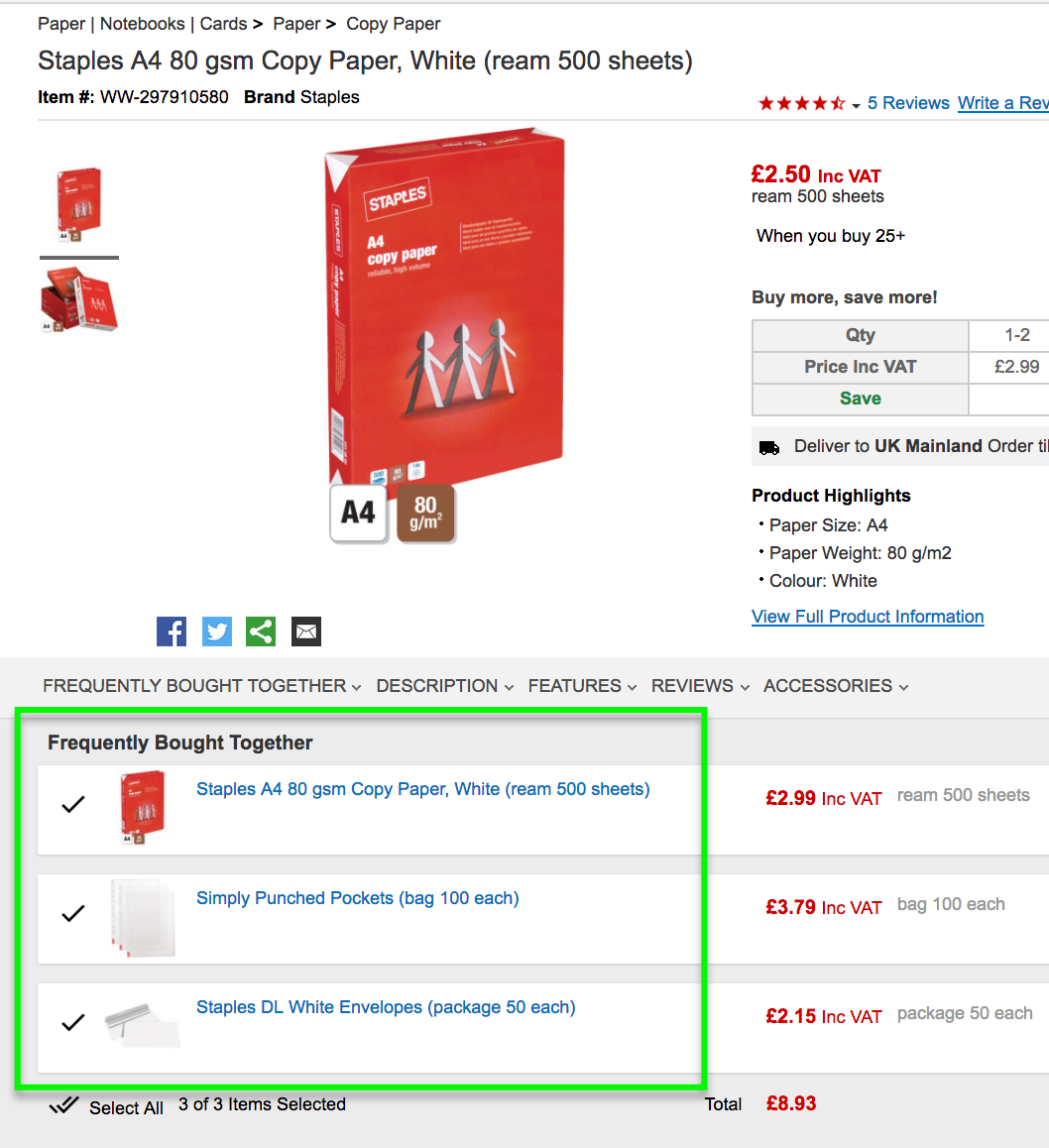Apr 21, 2017 | 7 Min Read
How to Build a Category Tree: Part 2
Get in touch with us
Reach out to us for any inquiries or support, and let’s connect!
Preparing your data before building your category tree
How to build a high performance Ecommerce category tree (for faster and more frequent purchase decisions) – Part 2/4: Preparing your data to build your tree
Now that we’ve covered some guiding principles in post 1, let’s get your data organized for building your tree. This will be more of a challenge for larger inventories, but also of greater importance. The more products you have in store, the more essential it becomes to get that data well organized, and allow your customers to navigate to their desired products as quickly and effortlessly as possible.
Mapping your product data to categories
First, let’s map those part numbers to product categories, so we can get an overview of what’s going where. Create a spreadsheet with ‘Part Number’ or ‘SKU’ in the first column, then ‘Primary Category’ and ‘Secondary Category’ in the second and third column. One of the challenges setting up your categories is when you have different products that come with the same part number. This is a topic we regularly discuss with manufacturers, as we believe they could help us all by breaking down the ‘part type’ product data a little further. For example, in automotive there’s generally only one part type for Tonneau Covers, but within that you have hard folding tonneau covers and soft rolling tonneau covers, which deserve a different category in store, but they aren’t separated by the original data (usually the more detailed breakdowns appear in the product title, attributes and description). Another example is bumpers, which come as only one part type, but to create a successful Ecommerce category navigation you will need to separate front and rear bumpers. You might find this in your industry and niche, such as T-Shirts with externally affixed tags vs. T-Shirts with tags printed inside. These may carry the same part number, and yet you’ll need to split them into different categories, because the position of the tag is something your customer will want to know (and choose) before they make their purchase. You may need to create a new spreadsheet column between ‘Part Number’ and ‘Primary Category’ and input your own in-house SKU. Then map those SKUs to your desired categories, such as ‘Front Bumpers’ and ‘Rear Bumpers’.
Products with multiple purposes
While mapping your categories you may find that some products have multiple uses. A good example of this is the lighting category. Within automotive alone, you may need lighting in the general ‘Lighting’ category, and also need it in the ‘Recovery’ and ‘Towing’ categories too. Non-automotive stores may have other uses for lighting, including indoor, outdoor, weatherproof, portable, emergency lighting and so on. A huge advantage of running an Ecommerce store over brick and mortar is the opportunity to put products in multiple categories, making them easier and faster to find. I remember one time at Home Depot I was looking for one particular type of finished redwood lumber. On this particular occasion, I was shopping in a Home Depot that I don’t usually go to. Since the layout of the store was different to the store I was used to, the lumber wasn’t in the place I expected it to be, and I couldn’t find it. After walking up and down the aisles and asking several employees, it took five guys and a computer check to eventually come across this redwood lumber in the garden section, where they had a fencing display. As fencing wasn’t the reason I was looking for the lumber, I didn’t look there first, and so it took a lot of searching to find it. Remember that once you are in a brick and mortar store, the effort and pain it takes to go to a different store is very high, so customers are more likely to stick around in the store searching for what they need. With Ecommerce it’s not like that. A customer can bounce to the next store with one click, and may never come back. Luckily, we can avoid this issue altogether by placing the same item in multiple categories. So whatever your customer’s reason for searching for the product, they should always find it quickly. If you have more than 2 or 3 ‘Secondary Categories’, just create new columns on your spreadsheet to accommodate them, such as ‘Secondary Category 1’, ‘Secondary Category 2’ and so on.
Recommended / related products
At this stage, also take time to figure out your cross-sell and upsell products. Make a note or spreadsheet entry for which products and subcategories should be recommended to customers who are browsing in certain areas of your site. It’s not only a great way to keep customers rolling through your product lines, rather than bouncing out to find what they need on a competitor site (if they think you have nothing more to offer, they may just stop browsing) but it may also encourage them to purchase items that they had not considered before, increasing your average cart values. UK Ecommerce giant Staples do a great job by recommending other products in the same line (in this case, more paper) along with related products, such as envelopes and folders:

Create a new column or two on your spreadsheet called ‘Cross Sell 1’, ‘Cross Sell 2’ etc to show which categories that item should be cross sold into.
Product groupings
Finally, get clear on how you will group your products. The size of your inventory and the range of your products will be a defining factor here. If you are selling everything under the sun in the automotive industry, then you will be breaking it down into larger groups, such as: Accessories -> Bumpers -> Front & Rear -> Color -> etc. But if you were a store specializing in bumpers, then there is no need for the larger groupings, and you dive right into the more specific groups such as: Front bumpers -> Size -> Color -> etc. Or: Brand -> Model -> Color -> etc. All these groupings will be treated as ‘categories’ that will become landing pages for you to drive traffic to via SEO, PPC or other sources. This is an exercise you can carry out in a separate document, on paper or on your whiteboard with your team. Just make sure the overall strategy of your product groupings makes sense at this point.
You’re ready to build your category tree!
Now you have your data prepared, it’s time to put it into action and build a high performing category tree that boosts sales. Check out our next post when you’re ready to go! Have questions about preparing your data? Let us know and we’ll help you out in the comments below!
More On Related Topic
Explore our highlighted blogs for the latest insights and trends in the industry.
How To Get More Readers For Your Blog (9 Proven Strategies)
Web Shop Manager - How To Get Readers For Your BlogIt is a well known fact that in business it is easier to keep customers than it is to find new ones. The same...
10 Proven Ways to Validate Your Ecommerce Niche Site
Validate the HTML of your ECommerce Website to Grow SalesAfter you’ve overcome the hurdles of picking a profitable niche, designing your store with a turnkey ecommerce platform, and making smart product selections, you’re finally ready...
10 Reasons Your eCommerce Website Needs Responsive Design for SEO Success
Web Shop Manager - Responsive eCommerce Website DesignStudies indicate that more and more people will be accessing the web through their smart phones and tablets than through their desktops or laptops. Given this trend,...

Ready To Grow Your Business?
Ready to elevate your online presence? Contact Web Shop Manager for expert solutions tailored to your
needs. Let’s build something amazing together.
